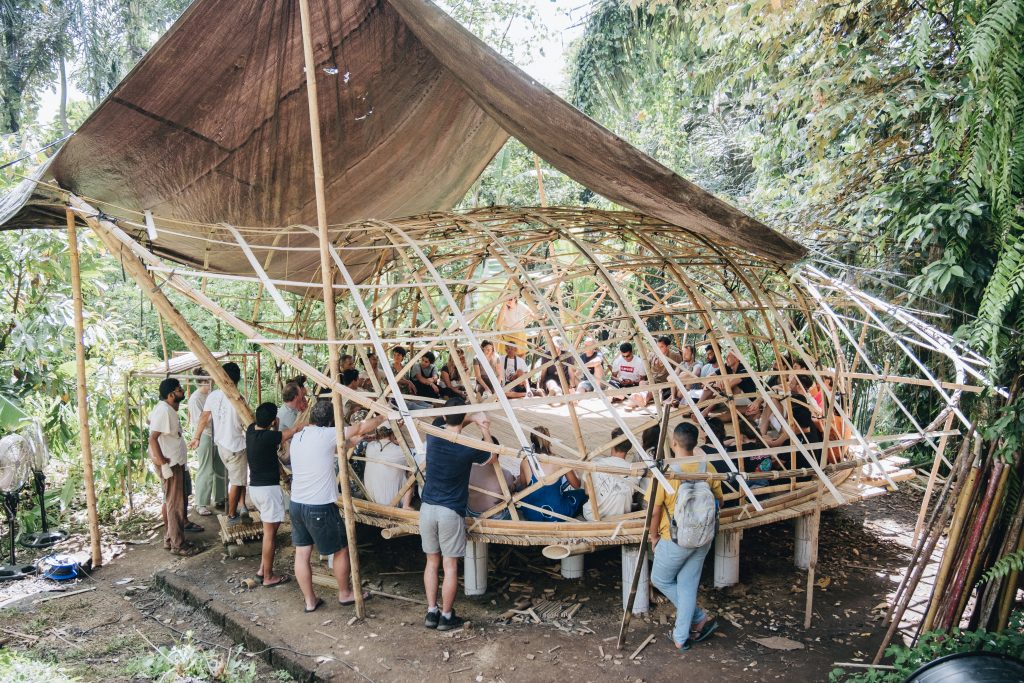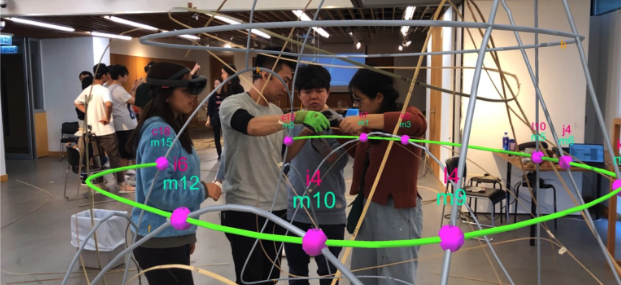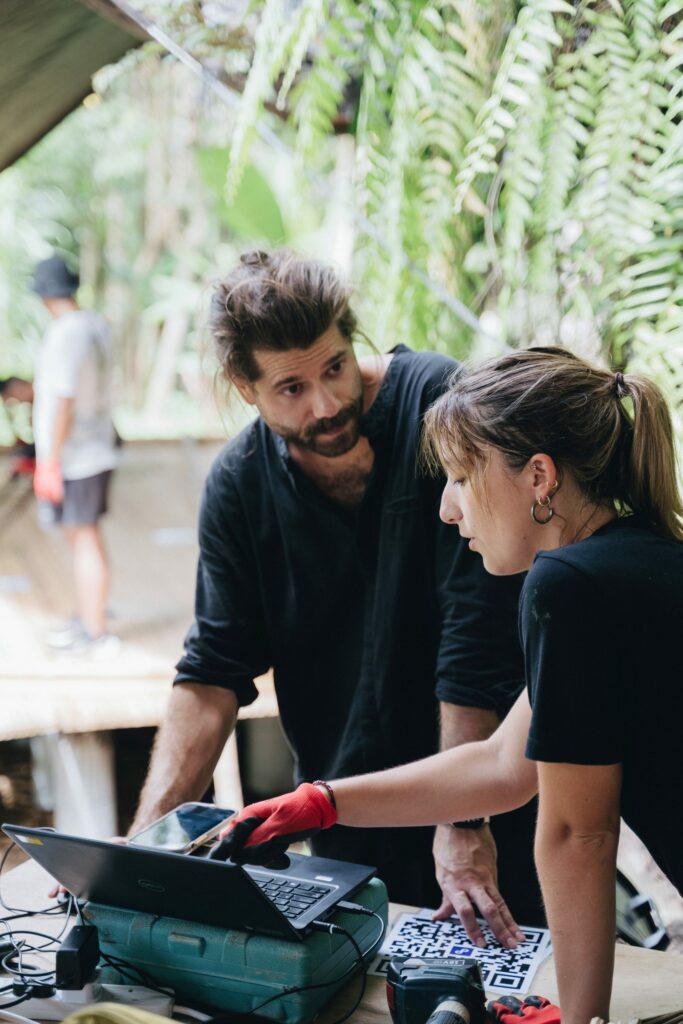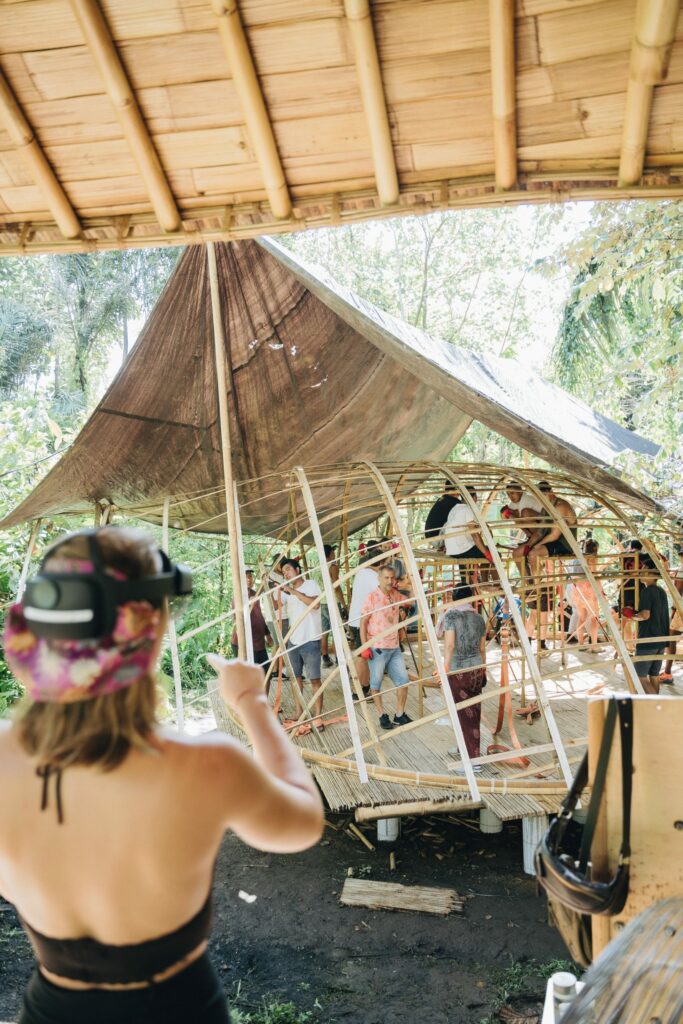Bamboo architecture stands out due to its complex geometries and heavy reliance on craftsmanship. Physical models have traditionally been central to materializing architects’ visions and conveying intricate design. Now, we are in the midst of a paradigm shift: the digital revolution is bringing computer-aided design tools to the forefront, unlocking bamboo’s potential in ways never before imagined.
 At a recent 11 day Bamboo Build and Design Course at Bamboo U, they were immersed in a world where technology meets tradition, experiencing the groundbreaking blend of bamboo construction and Augmented Reality (AR) technologies. Guided by the expertise of Dr. Kristof Crolla and Dr. Garvin Goepel from the University of Hong Kong and the Chinese University of Hong Kong, they embarked on a journey to build two grid shell domes, under the aid of holographic instructions.
At a recent 11 day Bamboo Build and Design Course at Bamboo U, they were immersed in a world where technology meets tradition, experiencing the groundbreaking blend of bamboo construction and Augmented Reality (AR) technologies. Guided by the expertise of Dr. Kristof Crolla and Dr. Garvin Goepel from the University of Hong Kong and the Chinese University of Hong Kong, they embarked on a journey to build two grid shell domes, under the aid of holographic instructions.
Unlike Virtual Reality (VR), which immerses users in a wholly digital environment, AR superimposes digital data onto our physical world. This subtle yet powerful distinction positions AR as an experience enhancer rather than a substitute for reality.
 AR technology holds the potential to democratize craftsmanship by replacing technical jargon with intuitive, holographic instructions. This shift from drawing-based communication to immersive, AR-infused instruction paves the way for a future where anyone, regardless of professional training, can participate in the creation of elaborate bamboo structures.
AR technology holds the potential to democratize craftsmanship by replacing technical jargon with intuitive, holographic instructions. This shift from drawing-based communication to immersive, AR-infused instruction paves the way for a future where anyone, regardless of professional training, can participate in the creation of elaborate bamboo structures.
AR assisted with everything—from the precise marking of foundations and dome bases, preparation of the materials in the required dimensions, and grid assemblies on-site. After the dome was popped up by the students, AR was also useful to verify and adjust the dome’s geometry.
 We anticipate AR becoming an even more integral tool in the translation of digital bamboo design into manageable on-site instructions. More advanced algorithms and increased processing power will allow for the creation of more complex and innovative bamboo designs.
We anticipate AR becoming an even more integral tool in the translation of digital bamboo design into manageable on-site instructions. More advanced algorithms and increased processing power will allow for the creation of more complex and innovative bamboo designs.
AR is also set to become a potent tool for collaboration. Architects, craftsmen, and clients alike will be able to simultaneously view and interact with 3D models in real time. This shared digital workspace will foster better understanding, promote creative synergy, and streamline the decision-making process.
 As we look to the future, the possibilities seem endless. Augmented Reality is not just a tool; it’s a catalyst for innovation, a medium for collaboration, a guide for craftsmen, and a mentor for aspiring bamboo architects. As we continue our journey, let’s embrace this transformative technology and together shape the future of bamboo architecture.
As we look to the future, the possibilities seem endless. Augmented Reality is not just a tool; it’s a catalyst for innovation, a medium for collaboration, a guide for craftsmen, and a mentor for aspiring bamboo architects. As we continue our journey, let’s embrace this transformative technology and together shape the future of bamboo architecture.
If you’d like to learn more about current advancements in Augmented Reality research, we invite you to check the amazing work that’s being done by Kristof Crolla, one of Bamboo U’s expert facilitators.
You can read the original article at bamboou.com

